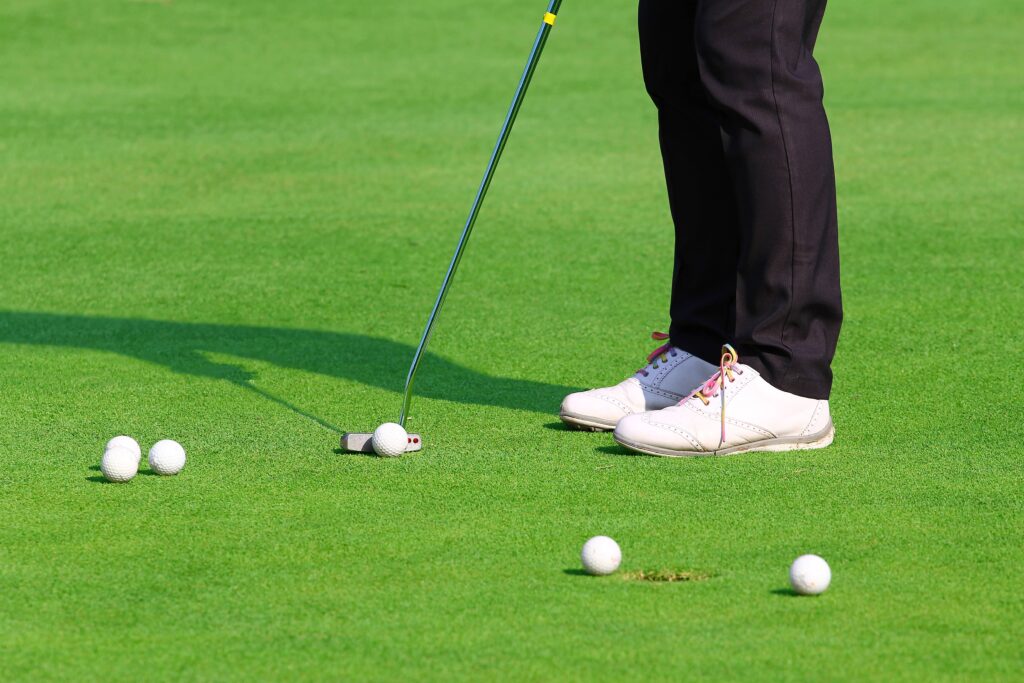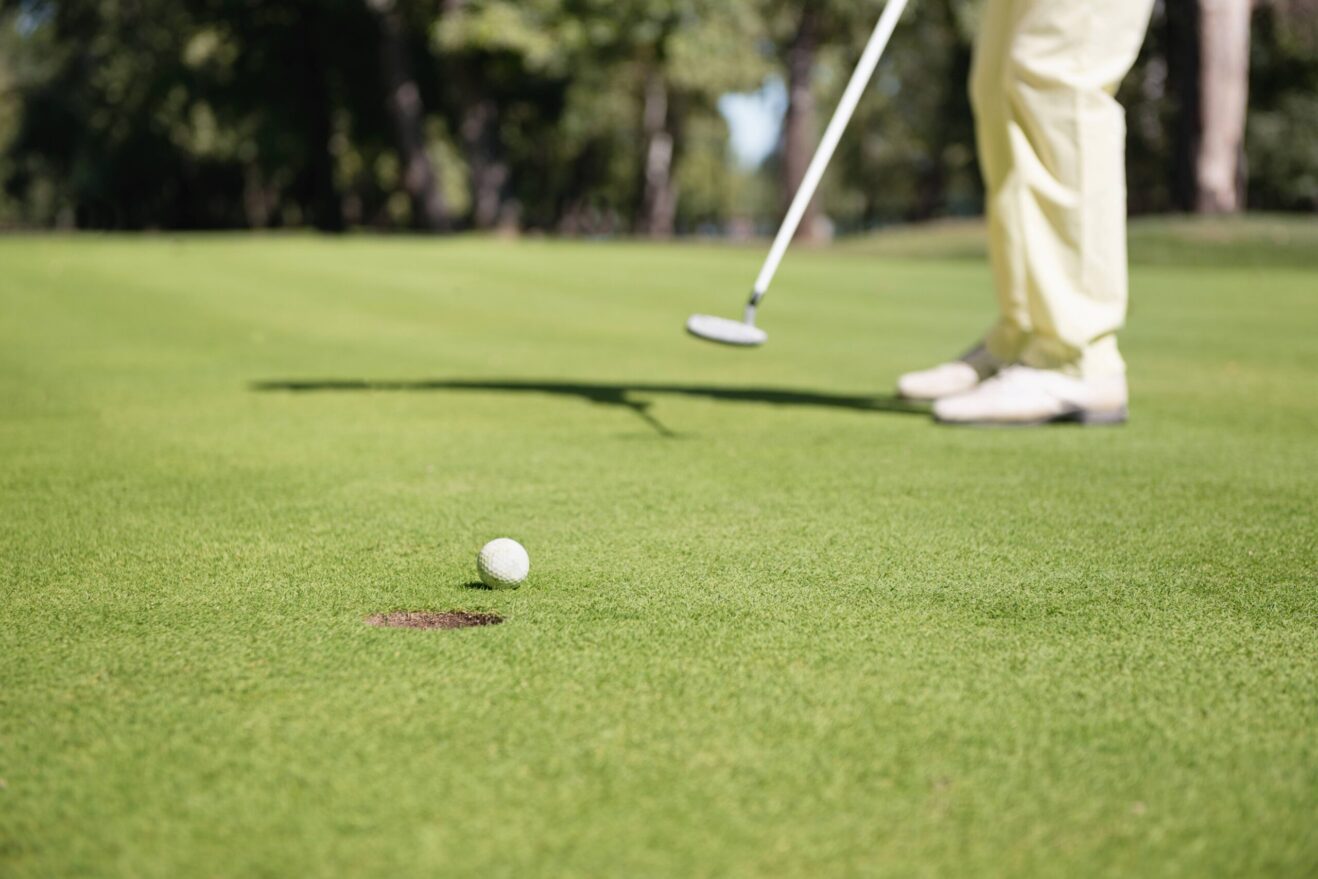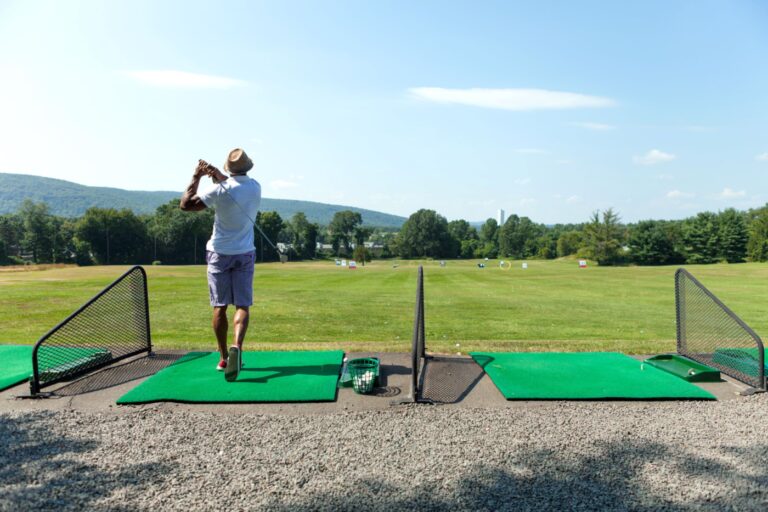How Many Putts Does the Average Golfer Take?
Golf is not an easy game, and when you look at the stats, it tells the same story. However, when it comes to putting, just how many putts does the average golfer take during a round? The answer may surprise you.
I’ll start by giving you the stats and then reveal my best tip for improving your putting numbers and lowering your scores.
Putting by the Numbers?
According to stats acquired by Game Golf Live, as of 2017, the average golfer hits 34 putts per round—the 2022 numbers are likely similar. To put things in perspective, during the 2022 season, Lucas Herbert led the PGA Tour with 27.70 putts per round, and the tour average was 29.06.
Although the approximate five-stroke difference between the average amateur golfer and the average professional golfer or PGA Tour player may not seem like a big difference, those five strokes add up when you account for the other strokes lost to a tour pro on short game, driving accuracy and distance, and approach shots. Putting is essential not only for PGA tour pros but also for average golfers to improve on and gain strokes.
Although there is no guarantee, working on putting coupled with other aspects of the game, such as short game, approach shots, and driving the golf ball, can turn an average golfer into a scratch golfer because every shot counts in golf.

How to Improve Your Putting
After years of practicing my putting and getting my game good enough to play golf at the professional level, I’ve concluded that one thing is more important in putting than anything else: routine. When I’m putting my best, my routine is consistent, and I trust the process.
Routine is the catalyst to everything else that makes up a good putter. Regardless of your stroke, ability to read the greens, or speed control, if your routine is not sound, well-rehearsed, and, most importantly, trusted, you will never improve as a putter.
A good putter in golf is similar to an excellent free-throw shooter in basketball—they follow consistent routines without fail and trust regardless of the outcome.
The outcome of any given putt, rather good or bad, is second to the routine because once a good routine is decided on and practiced, results on the golf course tend to follow.
Routine Above All Else
I’m not telling you to give up practicing your putting stroke or working on short putts, lag putts, etc. Rather. I’m making the point that everything else in putting is pointless to practice without first building and following a sound pre-shot routine. A pre-shot routine is vital in a golfer’s long game and when on the green.
Building a Solid Putting Routine
I developed my putting routine years ago and never changed it because it works for me.
A good putting routine begins before even standing over the ball. It starts with marking your ball, fixing your ball mark, if needed, and reading the putt. From there, golfer’s routines vary depending on what works for them. I take all my practice strokes behind the ball while looking at the line before I ever stand over the ball. Regardless if I’m standing over a short putt, long putt, or something in between, I pick a spot five or six inches in front of the ball to line myself up for the putt, take one look at my target, return my eyes to the ball, and make the stroke.
When I’m playing a lot of golf and spending an adequate amount of time on the practice green, I putt well; however, there are days when the ball won’t go in the hole. On those days, I accept my putting for what it is and continue sticking to my routine.
Regardless of how you set up your putting routine, stick with it and continue following it throughout your round.
The Downside of Over Practicing
Although spending time on the practice green to work on your putting is essential, I’ve found that if I spend too much time working on my putting and concentrating too much on the small things, I putt worse. However, every player is different, and spending more time on the practice green is best for your game. That said, I’ve played golf with many other players, including golfers who spent enormous amounts of time practicing their putting, and I have noticed that these golfers experience good and bad putting days just like me.

Keep it Simple
My best advice for establishing a solid putting practicing routine is to keep it simple. Perhaps more so than any other aspect of golf, putting is an art form, and it requires patience and the willingness to accept that your chosen canvas—the earth—is imperfect; no matter how hard a player practices and how precise they stroke their putts, sometimes the inconsistencies of the ground get in the way. This is why focusing on the routine rather than so much on the result is essential. Some golf circles will view this as incorrect and counterproductive; however, I thoroughly believe that putting can never be tamed, but the routine is the key to harnessing great putting, if only once in a while.
Looking Forward
As you continue to practice your putting routine and play the game, remember that golf is a journey rather than a destination. Although some have made it look easy at times, no one will ever tame or see perfection in golf; instead, we are only allowed glimpses of perfection for fleeting moments.
If you’re looking to build a solid practice routine for your entire game, check out the practice schedule I’ve used for years when working on my own game. I’ve found it to work best for me, and although it may not be the best for you, it’s a good start that you can build off as you progress through your career and understand the game.
Also, here are a few more related posts to read for further development of your golf game.
Resources:
https://www.golfdigest.com/story/how-many-putts-does-the-average-golfer-make-new-data-shows-you-need-more-time-on-the-practice-greenand-the-range
https://www.pgatour.com/stats/stat.119.y2022.html








